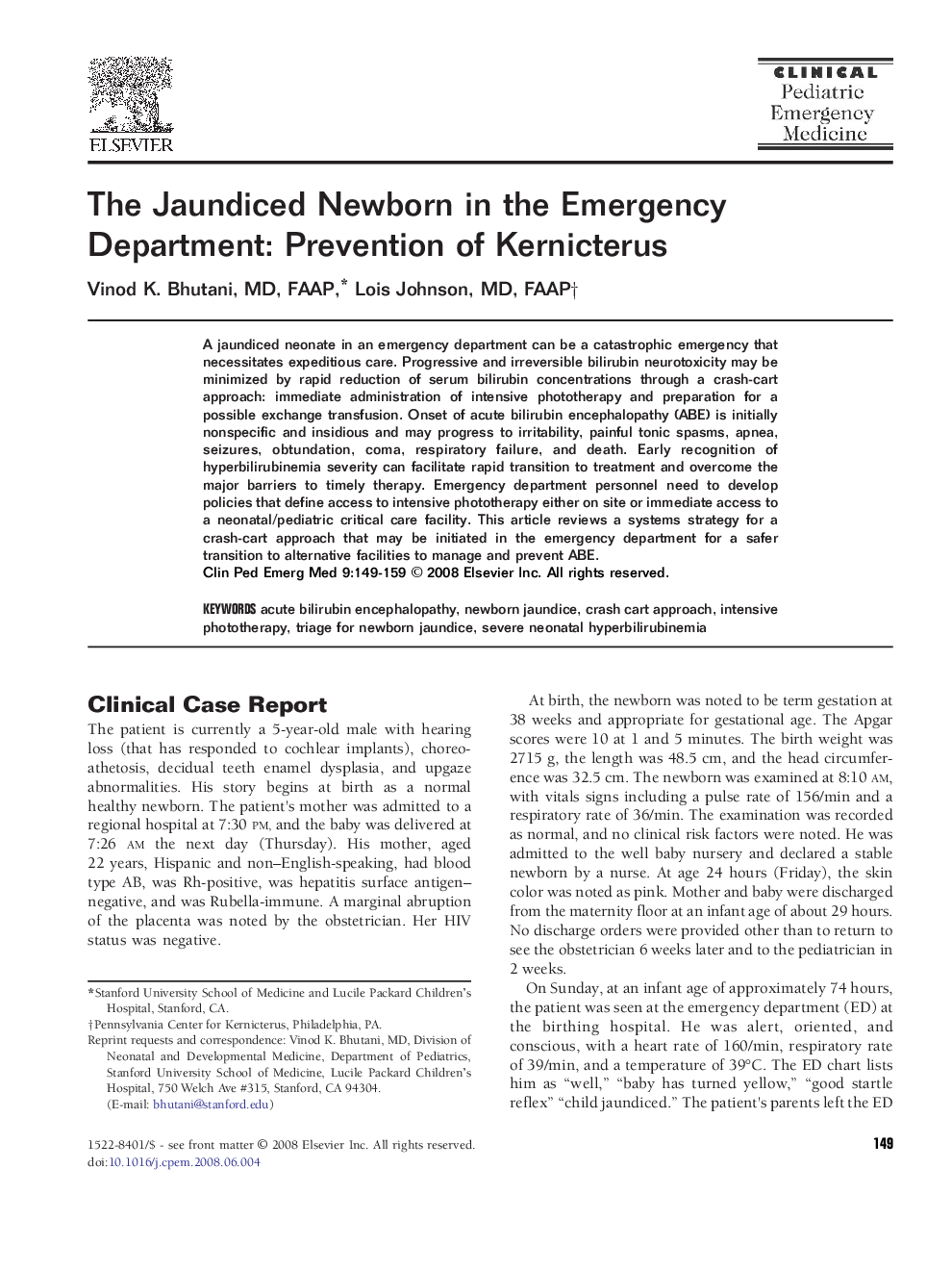| کد مقاله | کد نشریه | سال انتشار | مقاله انگلیسی | نسخه تمام متن |
|---|---|---|---|---|
| 3236071 | 1205499 | 2008 | 11 صفحه PDF | دانلود رایگان |

A jaundiced neonate in an emergency department can be a catastrophic emergency that necessitates expeditious care. Progressive and irreversible bilirubin neurotoxicity may be minimized by rapid reduction of serum bilirubin concentrations through a “crash-cart” approach: immediate administration of intensive phototherapy and preparation for a possible exchange transfusion. Onset of acute bilirubin encephalopathy (ABE) is initially nonspecific and insidious and may progress to irritability, painful tonic spasms, apnea, seizures, obtundation, coma, respiratory failure, and death. Early recognition of hyperbilirubinemia severity can facilitate rapid transition to treatment and overcome the major barriers to timely therapy. Emergency department personnel need to develop policies that define access to intensive phototherapy either on site or immediate access to a neonatal/pediatric critical care facility. This article reviews a systems strategy for a crash-cart approach that may be initiated in the emergency department for a safer transition to alternative facilities to manage and prevent ABE.
Journal: Clinical Pediatric Emergency Medicine - Volume 9, Issue 3, September 2008, Pages 149–159